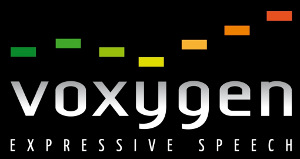Babu loves his biryani
In the dimly lit Audiology room, 10 year old Babu emanates energy and good cheer. Accompanied by his mother, he seems excited about his Avaz communication therapy session with his teacher Ms. Radhamani. Babu has cerebral palsy and is quadriplegic, yet this doesn’t stop him from having fun with the people around him. Before sitting in on his session, I envisioned somewhat of a struggle between him, the teacher and Avaz, but in retrospect I realize that I was far from the truth. In the forty five minutes that I spent with Babu, I partook in wonderfully lighthearted moments when he joked with his mother and giggled, and saw his mother’s beaming pride as he navigated the device to speak his mind. Of the many instances that stayed with me, one stood out with particular because it was – for lack of a better way of putting it – super cute. His teacher asked him about his favorite foods, and he quickly navigated the screens with his little finger, scrolling up and down searching for his choice. Then looking up at his mother, his face broke into a naughty smile. Biryani (Indian spiced rice), he tapped, biryani, biryani, biryani, he persisted, and laughed all the while. Soon, everyone joined in and his mother happily said to Ms. Radhamani “Yes, he really does love biryani”. Using Avaz, Babu was also able to tell his teacher what he wanted to eat for lunch, and his mother was more than happy to comply. Another instance that made me smile was when Ms. Radhamani asked him about his family. With almost no hesitation, he tapped on ‘brother’, to the delight of his mom. “He really loves his brother” she says proudly. But Ms. Radhamani is not satisfied – she wants him to name the members of his family in order of age. With a little encouragement, he is soon able to tap on Father, Mother, and Brother in that order.
Babu’s success with Avaz is a testimonial to the device’s potential to help a child communicate. Babu has only used Avaz for two weeks (yes, ONLY two weeks!), and he has already advanced from picture mode to text mode. In collaboration with his lessons, individual and group Avaz sessions, and a lot of homework that involves the AAC, Babu has developed his sight reading skills and is now able to better communicate his thoughts and preferences. At the end of the session, he ended by tapping on Thank You. Everyone enjoyed the session – and I know why I did. For me what resonated were the moments in which I saw and felt Babu connect with his mother through Avaz, albeit fleeting, they were fraught with the emotion that only parents of non-verbal children feel.
Through the session, we were able to observe what seemed to work for Babu and what didn’t. We’re presenting some tips here, just to extrapolate on that and extend some strategies to other Avaz (and AAC) users for more effective engagement with the device.
Another instance that made me smile was when Ms. Radhamani asked him about his family. With almost no hesitation, he tapped on ‘brother’, to the delight of his mom. “He really loves his brother” she says proudly. But Ms. Radhamani is not satisfied – she wants him to name the members of his family in order of age. With a little encouragement, he is soon able to tap on Father, Mother, and Brother in that order.
Babu’s success with Avaz is a testimonial to the device’s potential to help a child communicate. Babu has only used Avaz for two weeks (yes, ONLY two weeks!), and he has already advanced from picture mode to text mode. In collaboration with his lessons, individual and group Avaz sessions, and a lot of homework that involves the AAC, Babu has developed his sight reading skills and is now able to better communicate his thoughts and preferences. At the end of the session, he ended by tapping on Thank You. Everyone enjoyed the session – and I know why I did. For me what resonated were the moments in which I saw and felt Babu connect with his mother through Avaz, albeit fleeting, they were fraught with the emotion that only parents of non-verbal children feel.
Through the session, we were able to observe what seemed to work for Babu and what didn’t. We’re presenting some tips here, just to extrapolate on that and extend some strategies to other Avaz (and AAC) users for more effective engagement with the device.
- Individual attention is the best kind, but group sessions help build social interaction skills.
- Being consistent with the AAC normalizes the device to the child, so they’re able to acclimate to it faster.
- Give the child as long as he/she needs to ‘discover’ the device. Do not be impatient, and do not immediately prompt.
- Set short term and long term goals for the child’s progress using the AAC device.
- Do not get comfortable. If you see that the child has mastered the picture mode, for example, challenge them by gradually shifting to text. Challenges keep kids motivated, especially when they’re able to overcome them!
- Most importantly, positive reinforcement through encouragement and rewards will help the child stay motivated to use the device.
admin August 1st, 2012
Posted In: Success Stories
Tags: AAC, communication, parent, strategy




